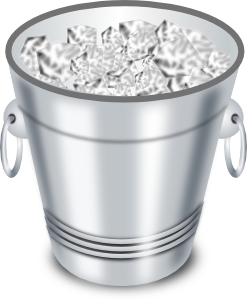What Was the Impact of the ALS Ice Bucket Challenge?
 Before this summer, the letters ALS probably didn’t mean a whole lot to those that saw them in a commercial or in book. This all changed when videos depicting people taking the Ice Bucket Challenge started to populate countless Facebook news feeds. This blast of cold water jump started an entire nation, not only generating nearly $100 million of donations in just over a month, but also getting more communities talking about Lou Gehrig’s disease (amyotrophic lateral sclerosis or simply ALS).
Before this summer, the letters ALS probably didn’t mean a whole lot to those that saw them in a commercial or in book. This all changed when videos depicting people taking the Ice Bucket Challenge started to populate countless Facebook news feeds. This blast of cold water jump started an entire nation, not only generating nearly $100 million of donations in just over a month, but also getting more communities talking about Lou Gehrig’s disease (amyotrophic lateral sclerosis or simply ALS).
Nearly 30,000 Americans have been diagnosed with this illness— a nerve cell disease that causes a progressive loss in muscle movement and often leads to paralysis and death within a matter of years. Prior to this summer, it wasn’t something that many people were willing to have a discussion about.
Shining a Bright Light on a Largely Ignored Issue
“Here you have this disease that was vastly ignored and underfunded for 75 years, and now it’s on the front page of newspapers and on every TV station and radio station,” explained Melanie Roach-Bekos, an executive director of the ALS Association Chapter in Wisconsin.
Despite some people criticizing the campaign as nothing more than a social media gimmick, ALS leaders are sure that it has significantly changed their position in the fight against this medical condition.
Those who are living with this neurological disease are quite pleased to see more people talking about it. There are growing communities of people who are interested in learning more about the symptoms of ALS and what can be done to prevent it.
While the specifics haven’t been shared, we assume that the ALS Association will be allocating a large portion of the donations to help fund promising new clinical trials for Lou Gehrig’s disease. They’ll also be able to improve patient care and expand their support services for families affected by this disease.
The Origins of the ALS Ice Bucket Challenge
As surprising as it might sound, the initial challenges had nothing to do with ALS. The campaign originally started out with participants getting to choose whatever charity they wanted. Chris Kennedy, a golfer from Sarasota, FL, was the first to choose the ALS Association, because of a personal connection.
Here’s Kennedy’s Challenge Video:
Kennedy chose ALS because his cousin had been diagnosed with the degenerative disease. He nominated his cousin’s wife to take the challenge and asked her to pass the challenge on to others. That video was eventually seen by Pat Quinn, a native of New York and another ALS sufferer.
 The 31-year-old was inspired by what he saw, and decided to contact a friend named Pete Frates. Pete had played college baseball in Boston and had also been diagnosed with Lou Gehrig’s disease. Since his diagnosis, Frates had been highly involved in the ALS community and had developed a large network of supporters (you can visit his website here). He posted his own challenge video to Facebook on July 31st using the hashtags #StrikeOutALS and #Quinnforthewin—and that’s when the ALS Ice Bucket Challenge really took off.
The 31-year-old was inspired by what he saw, and decided to contact a friend named Pete Frates. Pete had played college baseball in Boston and had also been diagnosed with Lou Gehrig’s disease. Since his diagnosis, Frates had been highly involved in the ALS community and had developed a large network of supporters (you can visit his website here). He posted his own challenge video to Facebook on July 31st using the hashtags #StrikeOutALS and #Quinnforthewin—and that’s when the ALS Ice Bucket Challenge really took off.
So despite the naysayers, there’s really no denying the benefits that have been realized through the unprecedented success of this campaign. What began as a simple gesture to brighten the day of a family member evolved into a movement that may forever change the face of future awareness campaigns.